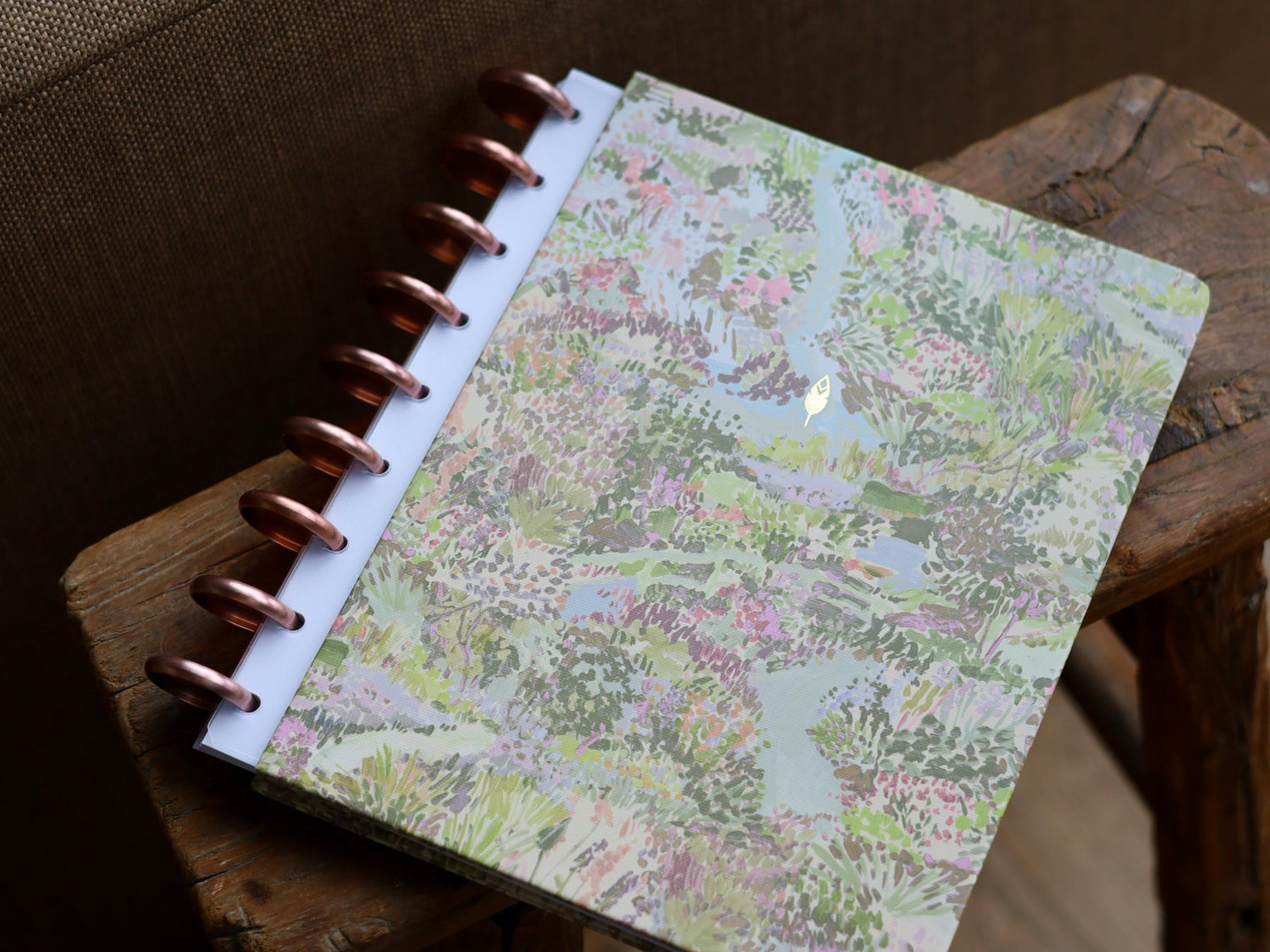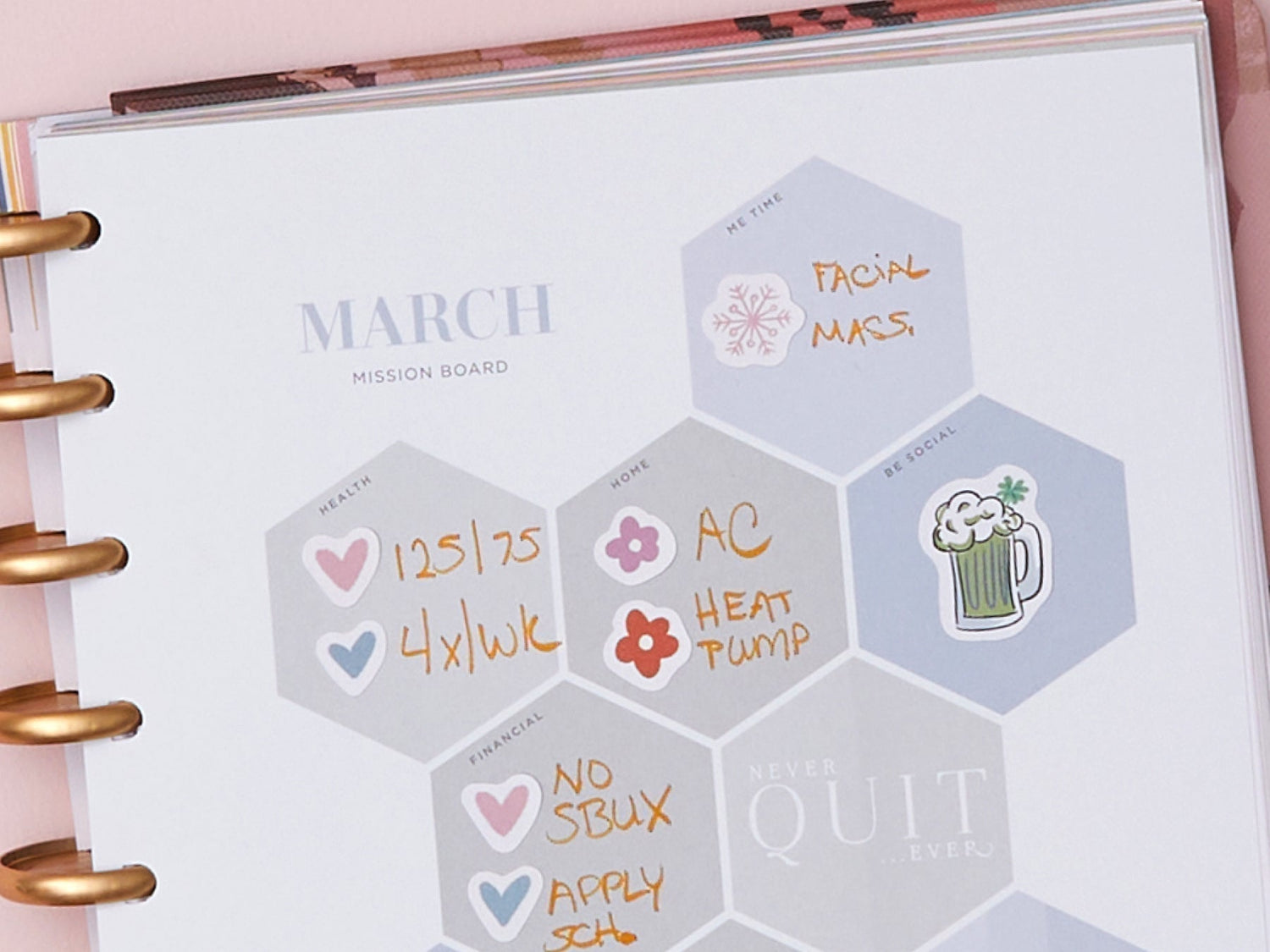It’s time to plan! We believe planners are more than a container for your appointments and to-dos. An inkWELL Press productivity planner empowers you to achieve your goals and live life on your own terms. In this blog post, we explain how to get started with planning, even if you’re never planned a day in your life.
The Five Ps of planning is an easy-to-follow system that helps you get the most out of your planner and add structure to your days. Are you ready? Open your planner and let’s get started!
STEP 1: PURGE (BRAIN DUMP)
At the start of your week, do a brain dump and clear the clutter from your head. Get everything out of your brain, the ideas, the chores, the wants and needs, and write it on a piece of paper, a Notes & Ramblings page from your planner, or our Weekly Kickstart notepad or insert, which were designed specifically for your weekly focus.
This list frees your mind from thinking and worrying about every little task. It provides a big picture of the week ahead and prepares you to plan with your family or team at work.
Once your brain dump/purge list is complete, you can begin to process and prioritize your tasks.
- Using your planner for the first time? Start with the Important Dates page at the front of the Classic, Flex, Monthly, and Daily inserts. Pop in the events you know are coming before writing them into each monthly view. Birthday, anniversaries, annual sporting events, it all goes here.
- Always consult the Important Dates page when you plan; something big might be around the corner!
- This is the perfect time to plan meals too. Use our meal planning inserts to help you plan every breakfast, lunch, dinner, and grocery trip of the week.
STEP 2: PROCESS…Plan Every Day
Make functional planning a part of your morning ritual. Spend 5 - 10 minutes writing the day’s tasks and goals into your planner.
- Pluck things from your purge list and work them into your daily schedule.
- If you have a big task on your priority list, try to break it up into smaller, more manageable tasks. Don’t write, “Clean the house.” Try, “Vacuum. Make beds. Put dishes away.”
- Review and recommit to your goals on the Goals - Make it Happen goal-setting page, and glance at your monthly mission board for to make sure you’re on the right track. Now you’re ready to prioritize.
STEP 3: PRIORITIZE
Make sure your calendar includes the day’s most urgent priorities. These are the things that must be done today.
Remember: when you prioritize a task or a project, you need to turn off any distractions that will make you less productive or effective.
If you schedule an hour to work on something, don't spend half of that time taking phone calls, checking emails, or scrolling on social media. Do you think surgeons check emails or take calls when they're in the middle of surgery? No, they focus on the task at hand.
We should all think that way. When you’re working on a priority, stay in the zone.
STEP 4: PROTECT
Your time is precious, so treat your time like the valuable commodity it is.
Fill your calendar with tasks that are important to you. Schedule things that you wouldn't normally put into your calendar, like meetings with yourself, fitness breaks, or creative time. Block these things on your calendar as if they’re meetings, and fewer people will bother you during that time.
Block off an hour for lunch, thirty minutes for email time, and maybe two full hours for a major project. This is called calendar blocking.
Within those blocked-off times, try task-batching similar tasks. During email time, you can also check Slack, your messaging apps, work-related social media accounts, or read a news article related to your industry. When email time is over, turn off email notifications (silence the ping) and concentrate on your next project without checking email.
STEP 5: PROPEL
If your day is going smoothly, keep that momentum by ending your day at a good stopping point. This makes it easier to come back and start right where you left off.
In your planner, leave yourself some notes about where you stopped and what still needs to be done. Keep these notes wherever you do your 5 – 10 planning session the next day.
Your brain will thank you, and you’ll have a head start when the project resumes.
END OF DAY REFLECTION
Ready to shut your planner for the day? Look back on the day’s victories and accomplishments and write them down. Check off completed tasks and add reminders for tomorrow’s planning session.
Try to write something on the I Am Grateful For page. When you close your planner on a positive note, it’s like giving yourself a mental hug. This helps reduce anxiety, and the inkWELL Press planning system should make you feel happy, satisfied, and successful at the end of the day.
Remember: productivity is not about doing more; it’s doing what’s most important. We want you to have the tools and resources you need to plan the beautiful, productive life you deserve. Happy Planning!



